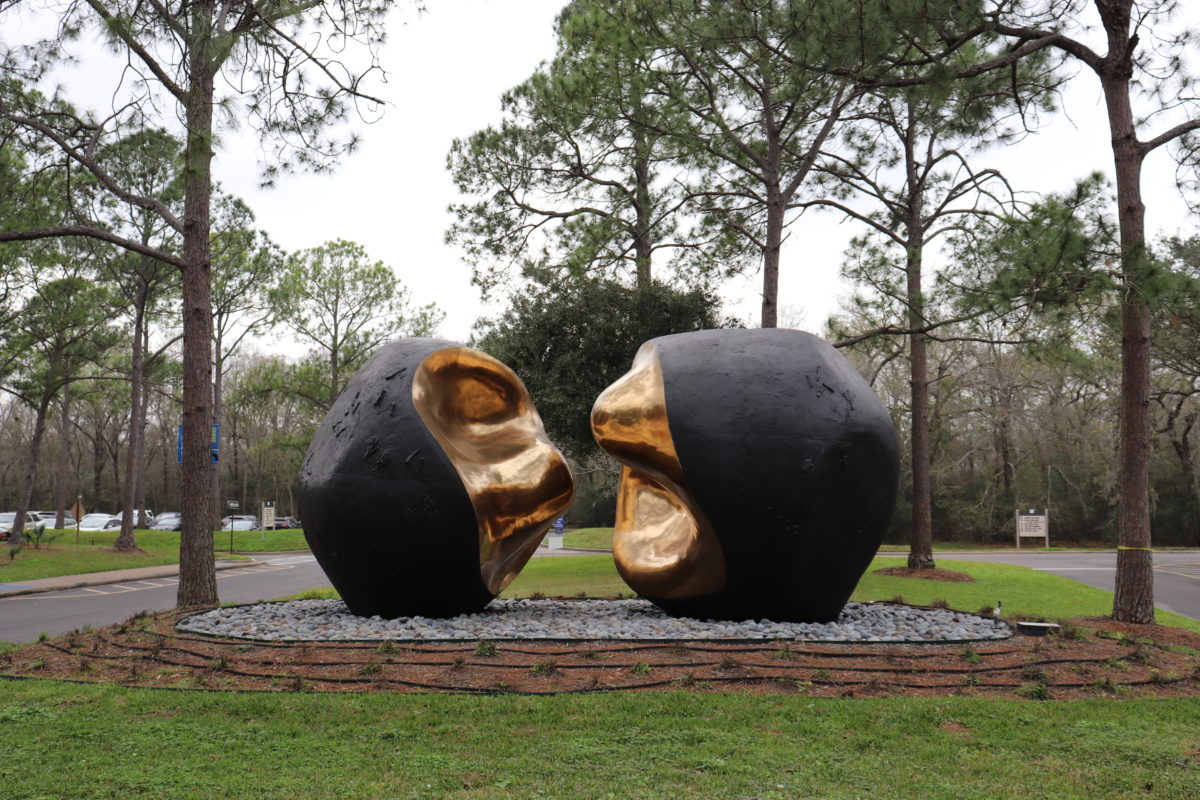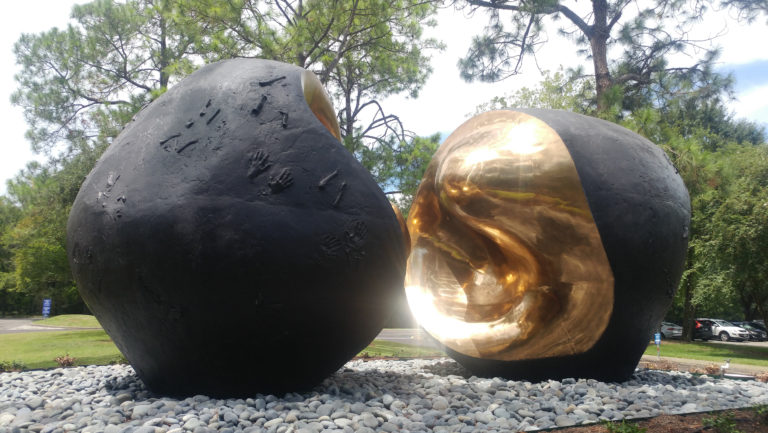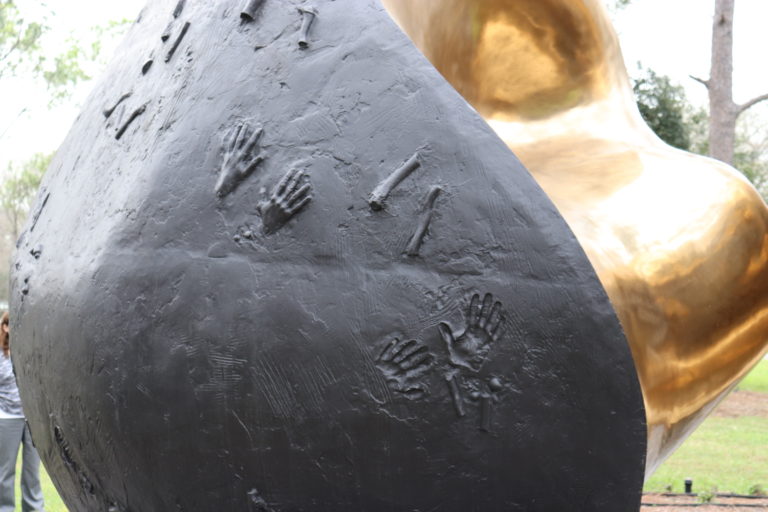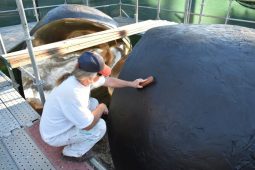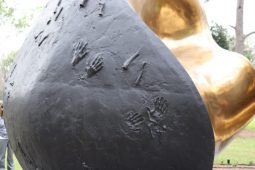Pablo Serrano
(Spanish, 1908-1985)
Spiritus Mundi, 1977
Bronze; 120 x 420 inches
Pablo Serrano’s monumental sculpture at Clear Lake takes its name from the Latin concept for mankind’s spiritual source: Spiritus Mundi; which, W.B. Yeats famously invoked in The Second Coming of 1919. Bestowed upon the sculpture by Alfred Neumann—the University of Houston-Clear Lake’s founding chancellor—the title was particularly befitting for one of the largest public art commissions ever executed by the artist following its April 12, 1977 installation on campus. Indeed, the sculptor’s lifelong concerns teetered between the same existential dualities that interested Yeats before him: order vs. chaos, light vs. darkness, creation vs. destruction, presence vs. absence. In this critical sense, Spiritus Mundi symbolizes the juxtaposition and tension within every pairing in life. A gesture to human interdependency, it also shows Serrano’s steady concern to bring spirit and beauty out of the stubborn inertness of stone and metal. Dr. Calvin Cannon, a leading specialist on Serrano and then Dean of Human Sciences and the Humanities at UHCL, recommended him for the project at Clear Lake. Serrano casted the pieces in Spain but assembled them onsite in Texas. Noticeable around the work are castings of Serrano’s hands, a small medicine bottle that held Serrano’s asthma medication, twigs, a small tree trunk, various striations and sea shells.
Location
University of Houston-Clear Lake
Bayou Building
